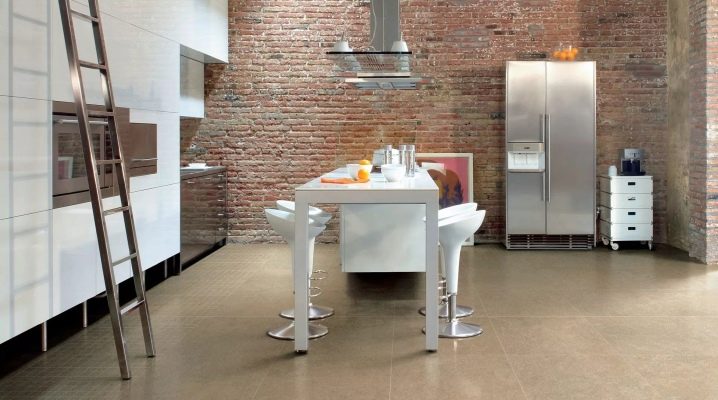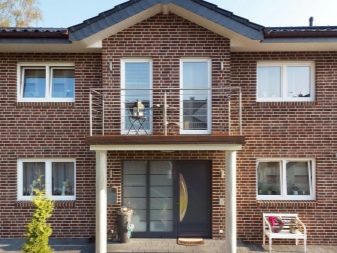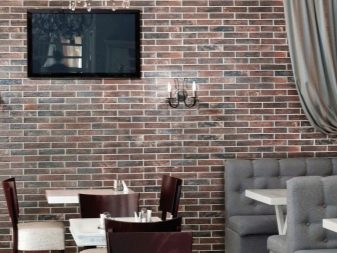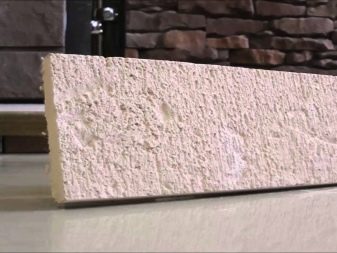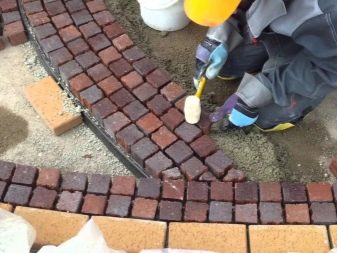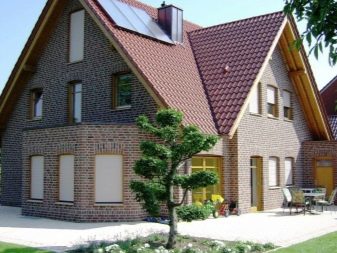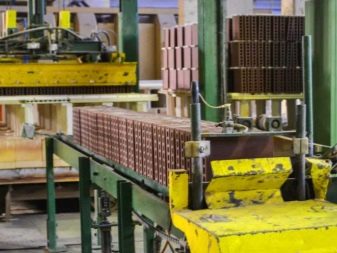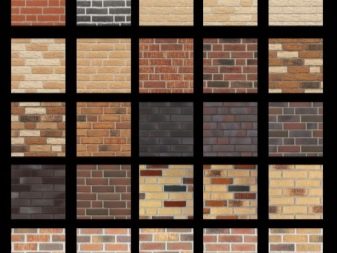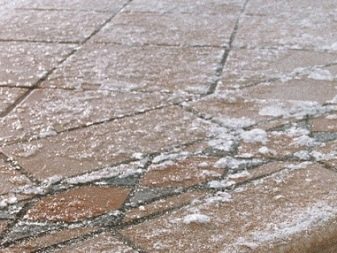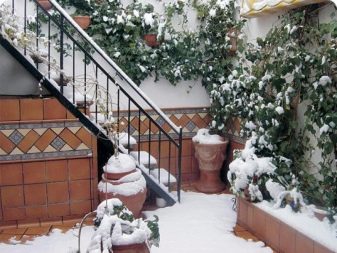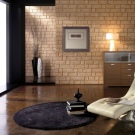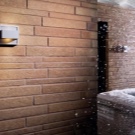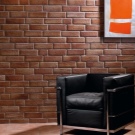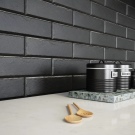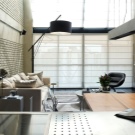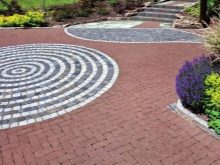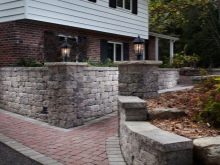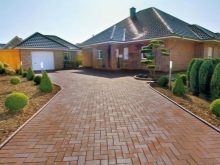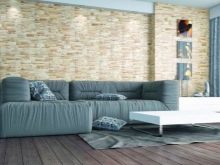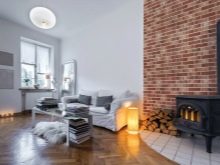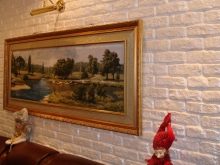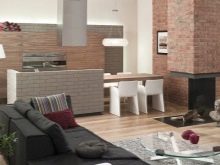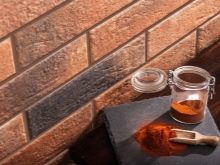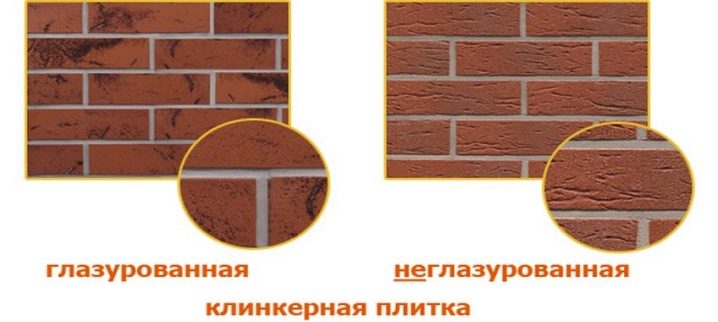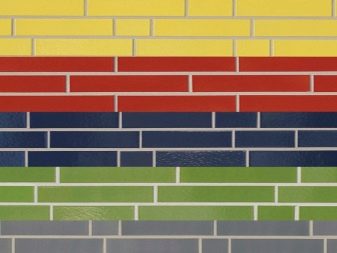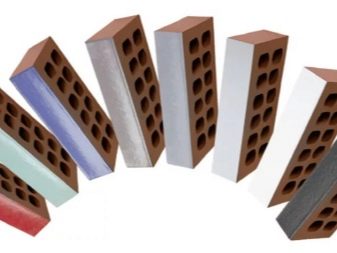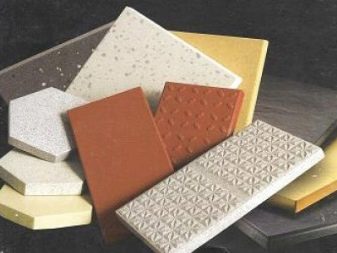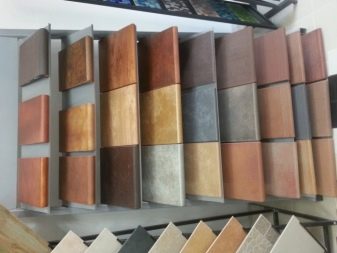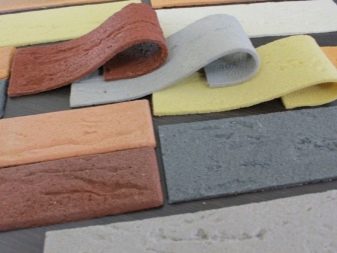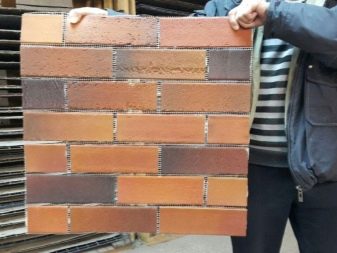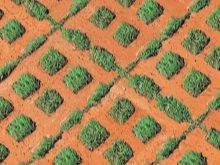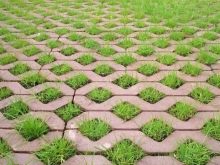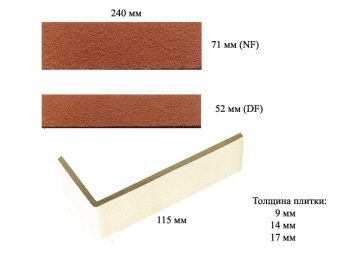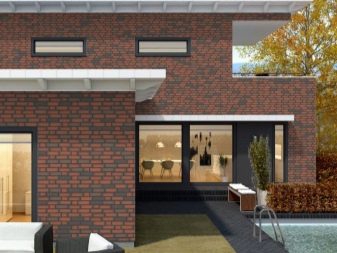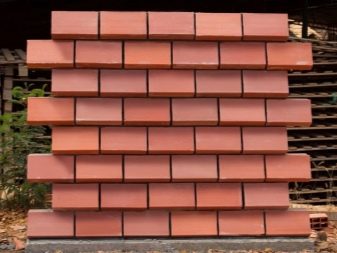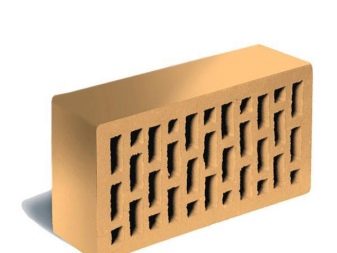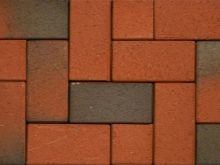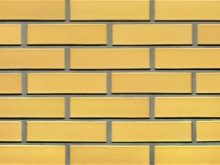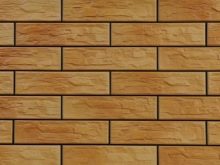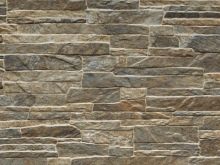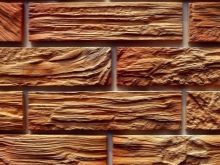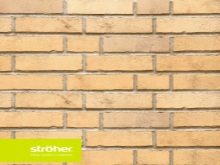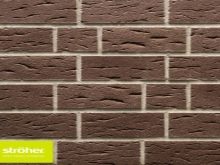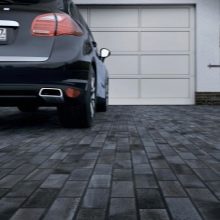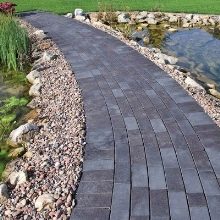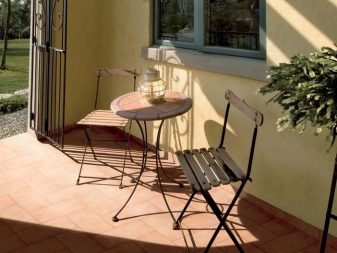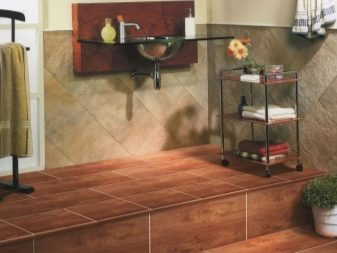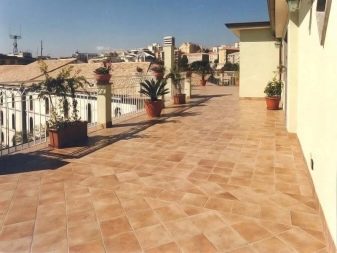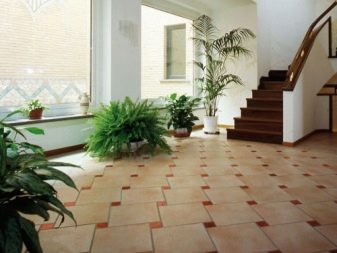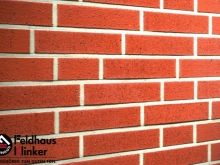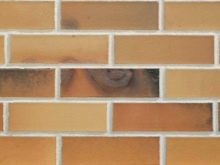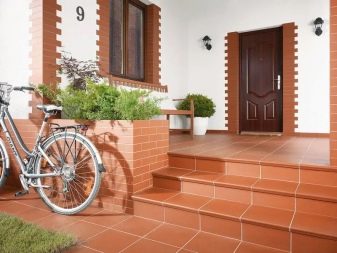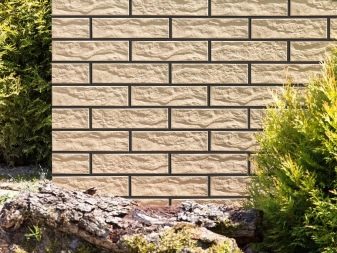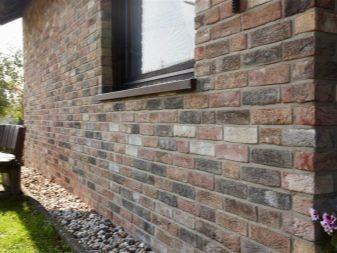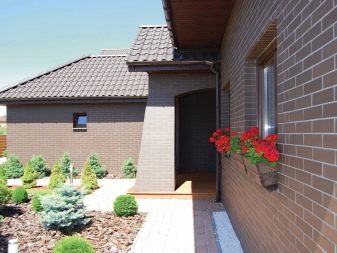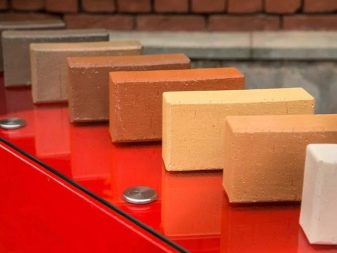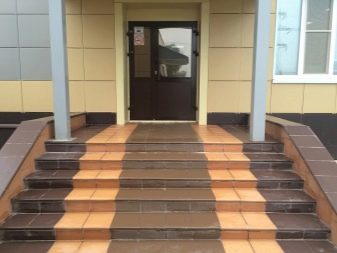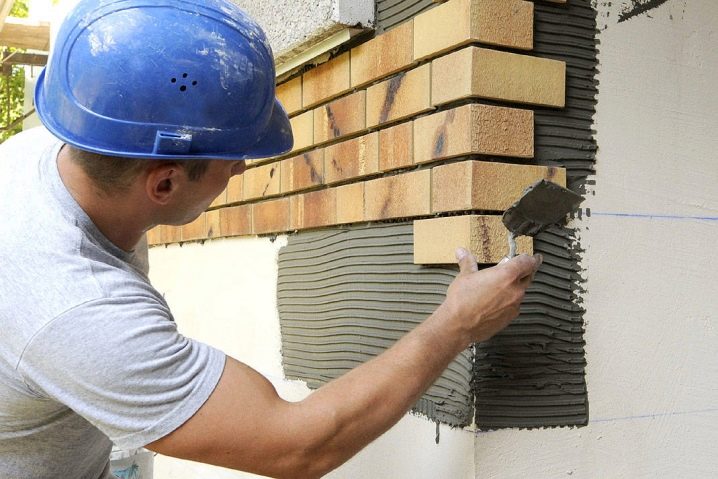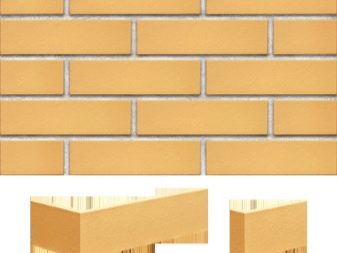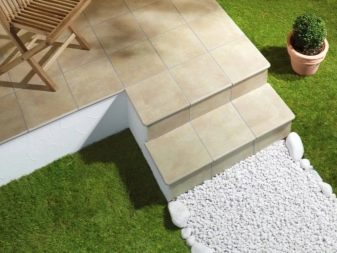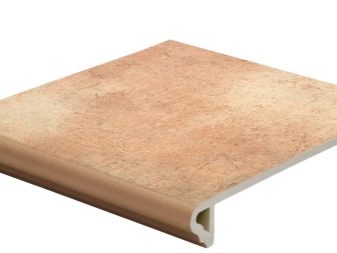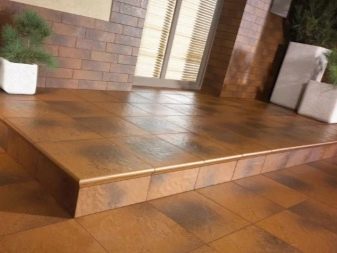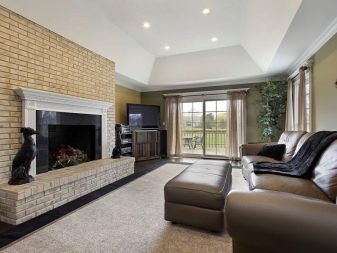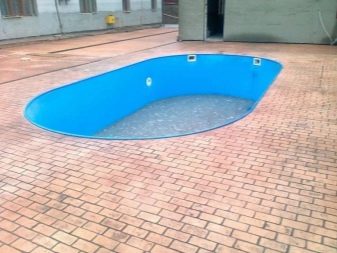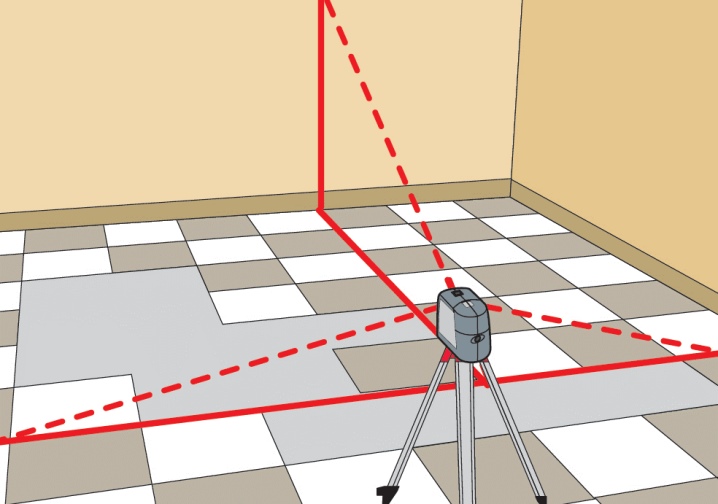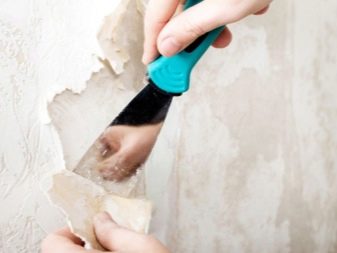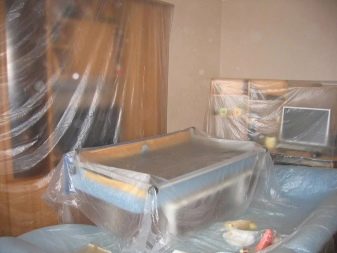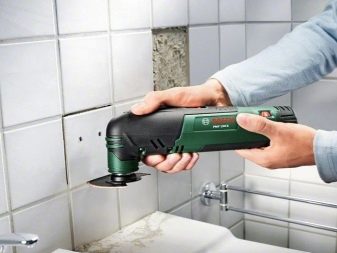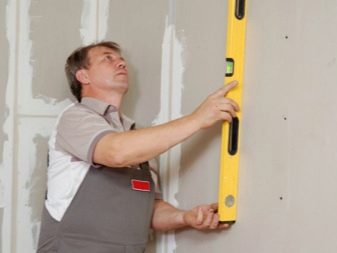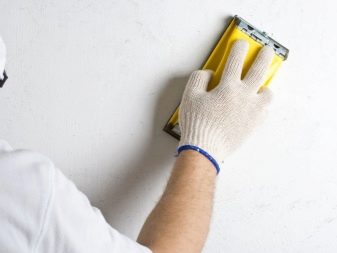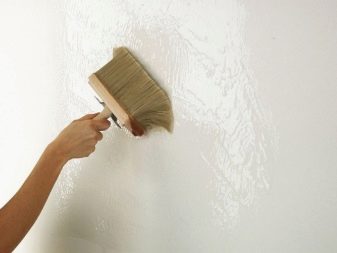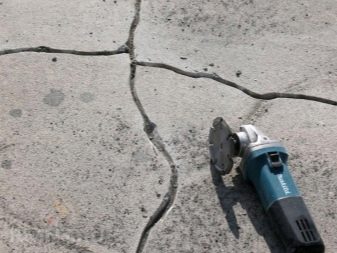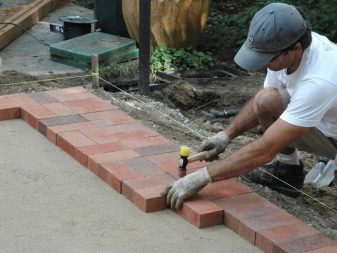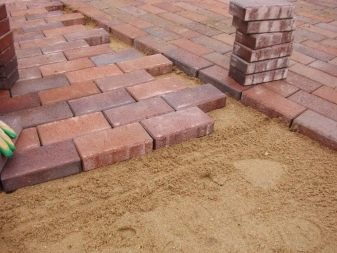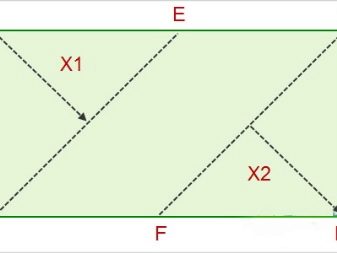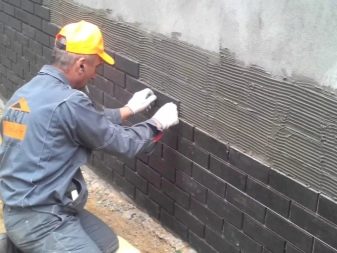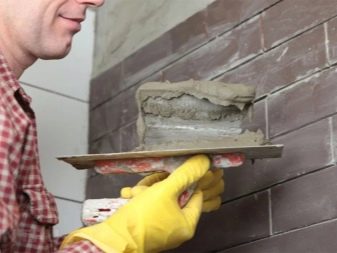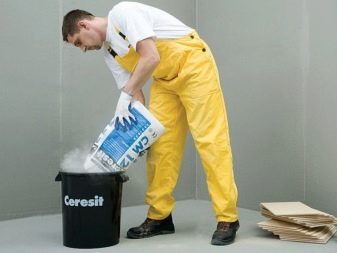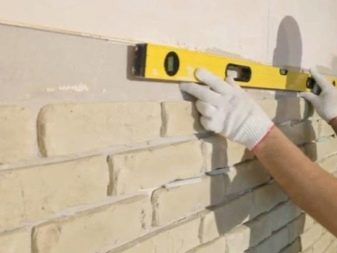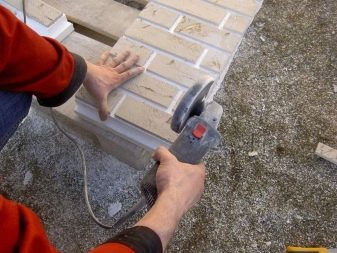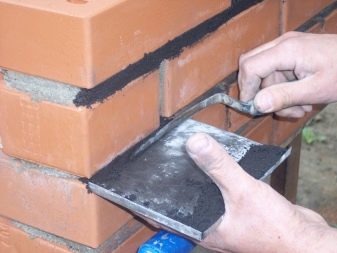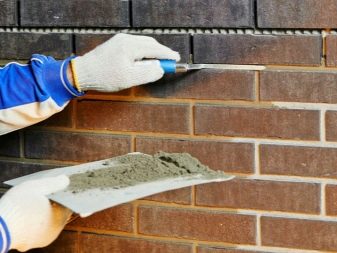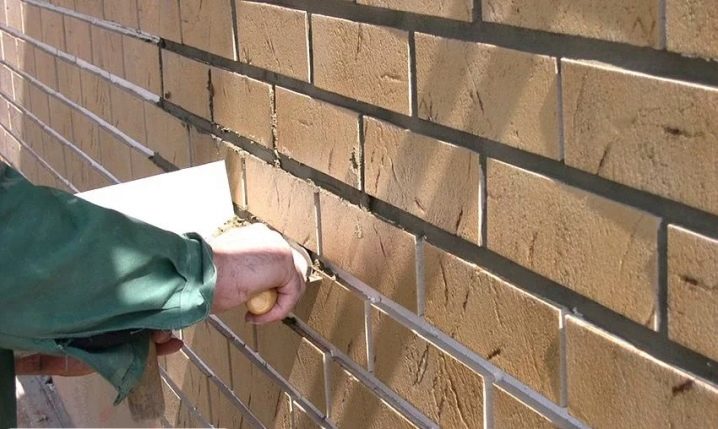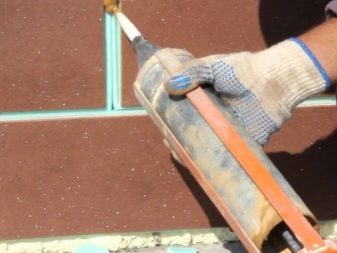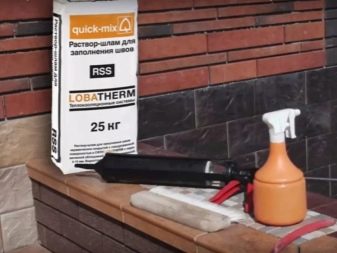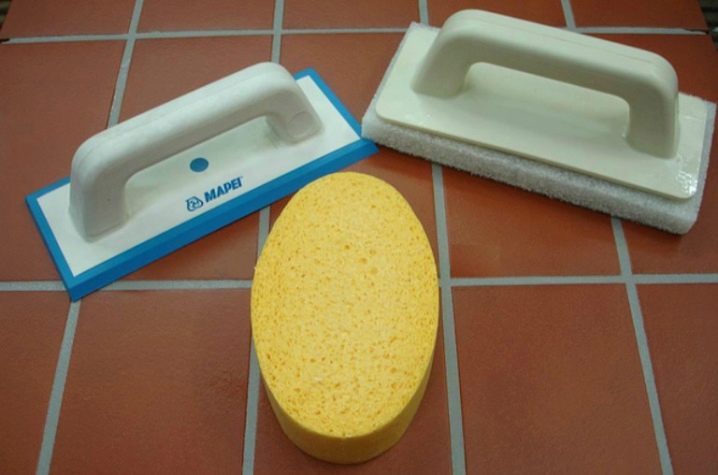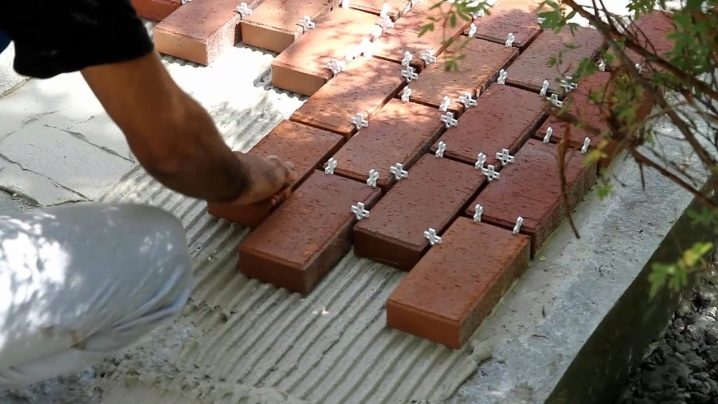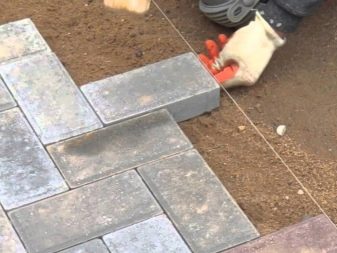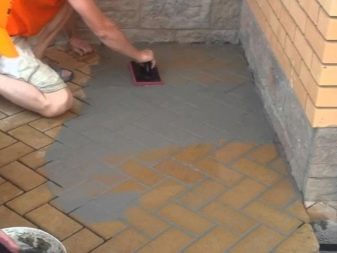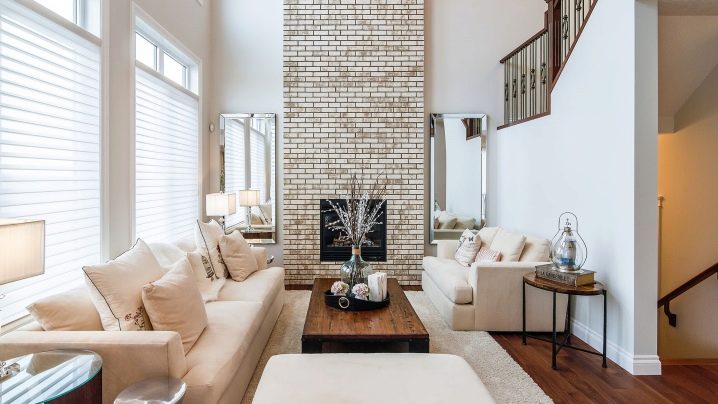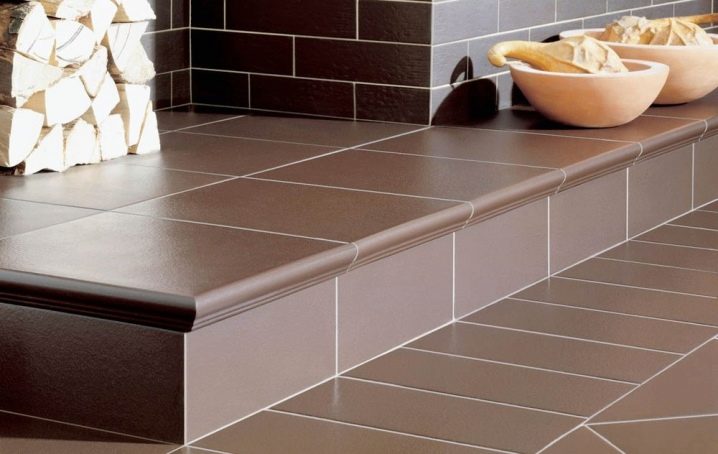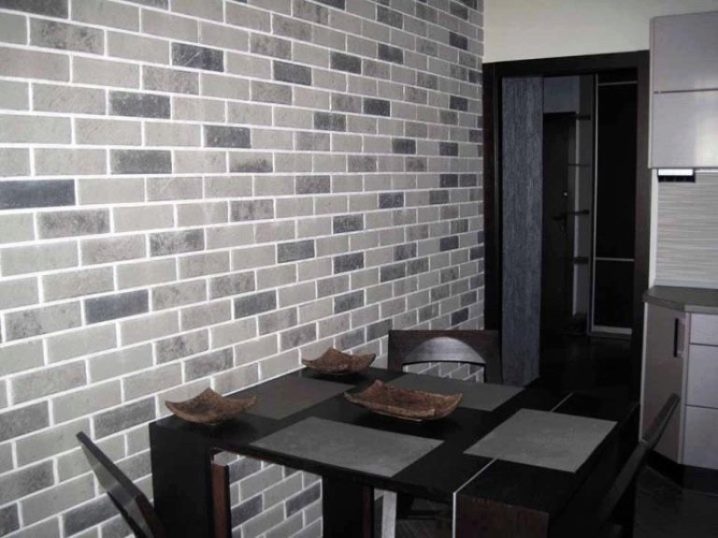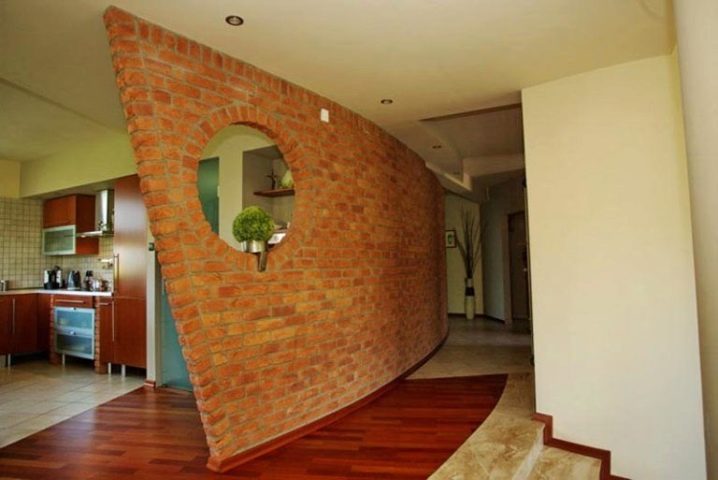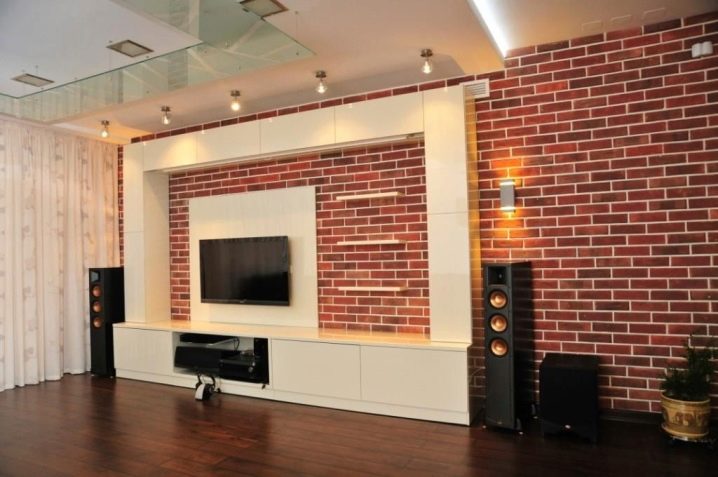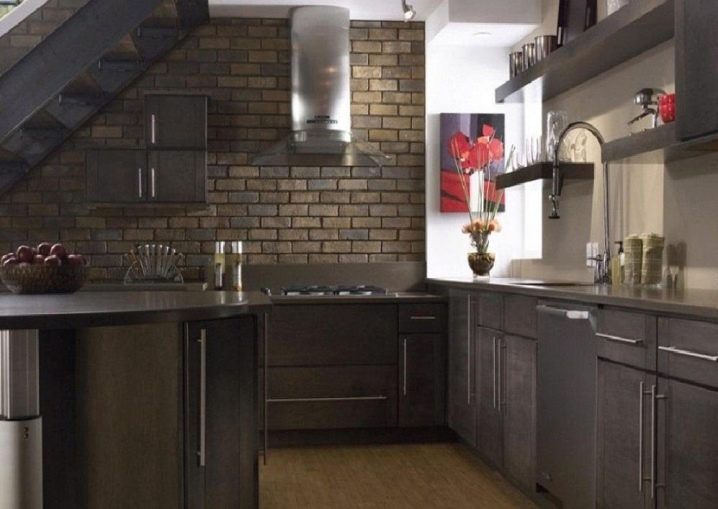Clinker tiles: characteristics and variations
Mankind at all times sought to create a universal finishing material that can be used both indoors and outdoors, so that it meets certain requirements, such as durability, wear resistance and moisture resistance. One of such finishing materials is considered to be clinker tiles.
What it is?
The brick tile is the building material made of slate clays. Production is carried out according to the technology called extrusion. Thanks to this technology, the product is durable, durable and frost-resistant. Since the product is made from environmentally friendly building material, it is suitable for both exterior and interior decoration. In addition to lining pools and stairs, clinker can be refined facades of private houses and municipal buildings, used as paving slabs.
For the first time this method of producing building material was tried in the Netherlands about two hundred years ago. Manufacturers had the task to create a cheap product, superior in strength to natural stone. This country had to import stone, which significantly increased the cost of finishing work.
Clay raw materials are baked in ovens at high temperature. The artificial tile satisfied inquiries and authorities, and consumers. Subsequently, the company began to produce not only tiles, but also clinker bricks. Until now, in European countries, this building material is used for finishing both urban buildings and private properties.
The texture of clinker tiles under the brick is suitable for lining of country cottages.
It is not a secret for anyone that at the present time brick is expensive, therefore houses are most often erected from foam concrete. But using clinker, you can modify the facade of the house, because it is almost impossible to distinguish a brick from imitation from the side.
Production features
Modern production of clinker tiles is to apply not only high temperature (it reaches 1200-1400 degrees), but also the industrial press. The raw material is refractory clay with highly elastic properties.. The use of plasticizers and the more artificial pigments is strictly prohibited.
In addition, the technical conditions of manufacturers allow the use of carbonates and salts. Metallic oxides and broken faience are also added to give improved clinker tiles. Thanks to them, the finishing material can take a certain color.
In addition, the use of fireclay allows you to increase the density of the finishing material and reduce the porosity.
Before using molding, components are added first. Depending on the volume of production manual or automatic batch. Firing is applied after pressing, it lasts over 48 hours, thanks to which the building material becomes wear-resistant, with a perfectly aligned surface.
By adding cold-resistant components, the winter resistance of clinker is achieved.
Advantages and disadvantages
The clinker is characterized by low water absorption, this advantage allows building materials to be used not only in rooms with high humidity, but also outside.Good indicators of frost resistance protect the product from damage in the winter season.
In addition, clinker tile is durable, durable, resistant to chemical agents and to temperature changes. As an example, we can recall the ancient pitchers and vases made from baked clay. Some specimens are preserved in excellent condition until our days. Despite its durability, even in the case of scratching the surface, they will hardly be noticeable due to the tonal homogeneity of the clinker.
The decorative features of the clinker tile make it possible to lay it in rooms made in various stylistic directions. The building material can be glazed, rough and unprocessed.
The clinker practically does not load the foundation, and from this it follows that the building, in the decoration of which this building material was used, will not collapse from the additional load during operation. Some restorers do use clinker tiles for facing shabby houses.
A surprising feature of clinker is the ability of the product to strengthen and stabilize during operation, in other words, in 50-60 years the building material will be stronger and stronger.
As noted earlier, at the production stage, both brick and natural stone can be simulated. Thanks to this, you can significantly save on finishing the suburban area.
And you can save not only money, but also the time that could be spent on this work.
Another advantage, of course, is the resistance of the product to mold, fungi, ultraviolet radiation, microorganisms, pests and fire. Possesses material and good thermal insulation, sound insulation. Special care is not required, it is enough from time to time to wipe with a damp cloth, in advanced cases, use household chemicals.
It is not difficult to guess that the advantages will have to be paid in addition - this will be the main drawback. It should be borne in mind that during installation it is unacceptable to use cheap adhesive mixtures, grout and mortar. This may adversely affect the useful life.
Any expensive product they try to fake is not an exception and a clinker tile. Remember if you use a cheap analogue, then with high probability it will be unsuitable for external use..
When laying clinker in the room should be aware that this material even in the summer remains cold, so you need to take care of the floor heating in advance. For this perfect heating system.
Unfortunately, if any tile becomes unusable, it will be difficult to pick up a similar one in the store, so you should always buy building materials with a small margin.
Kinds
According to the production technology is extruded tiles and made by pressing. In addition, the clinker tiles can be glazed and unglazed. The second option is more common, for its manufacture is used only clay. Building material is obtained in a natural color, which depends only on the variety of clay and combination.
If charcoal is added to the clay at the production stage, the product turns out to be dark in color, and when combining coal, clay and sandstone, not only different patterns are obtained, but also rough surfaces.
Natural brightness and color overflow is achieved by changing the level of heat. In addition, the color of the product affects its location in the furnace.This is what leads to the fact that in one batch there can be a material differing in color.
Glazed tiles, commonly called glazed or smallest, are also produced in one kiln. On the resulting product is applied glaze. It is applied either in one or in two layers, but the glaze should not be thicker than 2-2.5 mm. After firing, the decorative layer is firmly fixed to the base.
Manufacturing plants produce clinker corresponding to five classes of strength. For interior decoration of city apartments and country houses purchased products from 1 to 3 class. The second class is suitable for bedrooms, the third - for children's rooms, offices, bathrooms, hallways and dining rooms.
The brick tile of 4 classes of wear resistance will be suitable for commercial enterprises. With it, you can make garden paths on the plot. Increased wear resistance has clinker grade 5. As a rule, this flooring is found in places with increased customer traffic..
In recent years, flexible clinker has been widely used; it is found in stores under the name keralin. This building material can be easily rolled up and returned to its original state without any consequences.
80-85 percent of keralin consists of kaolin, clay, chamotte and quartz sand, the remaining part falls on special components. Due to this material is obtained not only flexible, but also light. With it you can veneer and rectangular and arched surfaces.
Not lost keralin and qualities inherent in the clinker tiles - frost resistance, moisture resistance, wear resistance, environmental safety. Keralin can be trimmed walls, ceilings, facades, terraces and garden paths.
Dispersion acryl acts as a glue base, which is not susceptible to ignition, does not emit harmful odors and substances, and is moisture resistant. It perfectly imitates brickwork, making it suitable for facing fireplaces and stoves.
Drainage and lawn clinker, produced in the form of a grid, can be used as a design object. The lawn grows perfectly through such a grille, and the clinker easily maintains the weight of the car, due to which the damage to the soil is minimal.
Dimensions
European manufacturers produce clinker thickness from 10 to 17 mm. The length is usually equal to 240 or 300 mm. But these figures are conditional, often the plants themselves select the sizes for their products. For example, a small-sized clinker tile used as a paving stone has dimensions of 100x200 mm. Its thickness is most often equal to 50 mm. And to imitate tile, a product with dimensions of 300x300 mm is produced.
Flexible clinker tiles have a weight of 4-6.4 kg per 1 m2 with a thickness of 4 mm and above, due to which they have almost no effect on floors, walls and foundations. Since certain dimensions are not fixed, any buyer can order the product in size.
Although domestic manufacturers use foreign equipment, they try to produce building materials according to specifications.
Most often, clinker made in the countries of the former Soviet Union and used for facing the facade corresponds to the following dimensions: 450 mm in width, 150 mm in length and 9 mm in thickness.
Colors and design
As noted earlier, the color of the clinker depends on the color of the clay and on the temperature at which it is burned. Most often the red and brown clinker tiles come off the conveyor. Green clay helps to create a red tint.White and black color are very rare.
By adding coloring pigments it is possible to influence the color of the product. Due to this, yellow, beige (including ivory color) are found on sale. Smooth glazed tiles can have additional color design outside, including with a certain pattern.
In addition, imitating tile is made under the tree and under the stone. It is used for both interior and exterior. Keep in mind that the building material, made under the old days, is perfect not only for classical, but also for modern stylistic trends.
By the way, a dark tile that imitates brick can be used in an industrial, Gothic and vintage style room.
Manufacturers and reviews
Buyers note that products from countries such as Spain, Italy and Germany have good quality.
German manufacturer Stroeher is the undisputed leader. In his collection there are several dozen different specimens, including convex, rectangular tiles, as well as Florentine clinker and a special version with notches.
Products manufactured by this company have high qualities that perfectly imitate natural stone. This is achieved through modern digital printing. On sale there are instances of various colors, including brown and dark gray.
It's no secret to anyone that on a glazed surface it is easy to slip and injure. Given the winters in most of the Russian Federation, the engineers of this company came up with a special coating. Clinker tiles with anti-slip effect can be used for finishing garden paths, stairs, steps.
Unglazed products from this company are sold at low cost, they come in various shapes and textures. In general, clinker on sale is found in dark brown and sandy hues.
Spanish company Exagres manufactures its products from calcined clay; in some models white clay is used. Spain, exporting its goods to the countries of the former Soviet Union, takes into account the local climate, so the clinker has a non-slip surface. Products are sold at affordable prices, while quality does not suffer.
For interior design, the Italica series has been specially developed. This clinker tile perfectly imitates natural stone. Due to the rough surface, the risk of injury is reduced to zero. For swimming pools and bathrooms, a special “Taiga” collection was invented; when finishing with this building material, it is almost impossible to distinguish natural wood from its counterpart. Photo printing with the texture of birch, cherry or coniferous wood is suitable for facing stairs in a country cottage. In addition, this finishing material does not require any maintenance.
Italy is represented in the ranking by the company Klinker Sire. In its assortment there are products that are suitable for luxurious interiors, and for classic styles. High quality building material, characterized by ease of installation.
This company has been working in the market of finishing materials for several decades. During this time, its products are not words, but affair affirmed resistance to ultraviolet radiation, frost and abrasion.
Another representative of Germany is the firm FerdhausKlinker. She is known around the world from the middle of the nineteenth century. By law is one of the leaders in the European market.In production, only local clay is used, this ensures the quality of the products.
Conforms to German quality standards and products from the company. ABC. From its conveyor is produced and unglazed, and smooth, and structural clinker tiles. The collection has over 45 colors.
German manufacturer Roben There are ten factories in different countries of the world, which makes it possible to significantly save on logistics. This competitive advantage allows Roben to offer their products at a low price, and they, by the way, are offered in a large assortment of building shops.
Polish manufacturer Opoczno fell in love with the domestic consumer for the clinker tiles of standard sizes 300x300 mm, which can be used as a replacement for expensive ceramic granite. It has an excellent value for money.
Company Cerrad from Poland offers a clinker tile for a concrete base, wood, stone, brick. In production only ecologically safe raw materials are used. Products turn out frost-resistant, wearproof. The antiskid surface allows to finish with this material ladders of buildings and cottages.
Thanks to its refractory qualities and resistance to biological corrosion, clinker from Cerrad can also be veneered indoors.
China is represented in the building stores by firms China Klinker, RSJ-Ceramics, Red Lion and King Klinker. Their products are sold at the same price as the products of the companies described earlier, but it’s too early to talk about quality, since these manufacturers have just appeared.
But I would like to note that the only producer who has managed to gain the trust of not only Asian, but also European consumers in a short time is Houson tiles.
The production of clinker tiles and in the Russian Federation. One of the leaders of the domestic segment is a group of companies. "LSR". This is a high-quality product sold at affordable prices. The manufacturer pays special attention to the decor. Not the last place in the ranking is taken by products from the company. "Kerolayt" and from the enterprise "Eco Clinker".
How to choose?
You should know that the clinker tiles are suitable for exterior and interior work. It can differ only in color, size and price. In its composition should not be cement or polymer concrete. Durable product is obtained only from clay.
Since the color of building material may differ, it is important to buy clinker from one pallet. Otherwise you have to spend time sorting.
A little advice: if you mix products from different boxes before installing the clinker tile, you will end up with an average color.
Sales consultants are often advised to purchase clinker tiles with the so-called "dovetail" - this is a building material that has good adhesion properties and is suitable for lining industrial premises.
Therefore, it is not advisable to overpay, for everyday needs, ordinary clinker is sufficient.
Some designers advise to buy tiles of different colors, but from the same model range. Thanks to this, you can “beat” the room or the facade of the building. To do this, it is enough to buy several boxes of a different color to the basic shade.
German clinker companies ensure that the service life of their products is 25-30 years, including in the cold, which means that building material is suitable for finishing the terrace or balcony. But it is very important to examine the packaging before buying. Keep in mind that some manufacturing plants produce double tiles, before laying it will have to be separated. For this it is necessary to break the product along the seam.
Do not buy the material "butt", several boxes of clinker tiles should always be kept in reserve. Unforeseen breakdowns may occur at the time of laying or cutting. Do not forget that in addition you will need a corner tile.
It is important to keep in mind that clinker with capinose is used for the finishing of stairways.. Due to this, the installation time is significantly reduced, since it will be necessary to cut, adjust and decorate less. This tile can be used to finish the threshold.
Interior tile looks great in the apartment, and in commercial premises. Thanks to the design and zoning, you can make a familiar place of rest for the whole family out of the usual living room by organizing an additional children's, working and sleeping area. This is primarily necessary to take into account those people who have an apartment or house of small dimensions.
The brick tile imitating a tree, will be suitable for finishing of a bath, pools, saunas. Since the entire clinker is moisture resistant, special attention should be paid to the color and texture of the building material.
When buying is not worth it to build on the cost, as in the markets there are a large number of fakes. Feel free to request quality documents.. As noted earlier, German, Polish, Italian and Spanish clinker tiles have good quality.
Stages of installation
Finishers note that the installation of clinker tiles is best done on a cleaned, leveled, smooth, degreased surface. It is desirable that the base was either concrete or brick. But first things first:
Markup
The finishing tile keeps within only after a marking. Certain difficulties may arise with window openings and door jamb. Therefore, you need to mark the base, moving from the door or from the window. Thus, the cut parts will be glued either at the eaves, or closer to the base. Do not forget when applying markings about the width of the docking seams, in most cases their width does not exceed 12 mm.
By the way, the seam ensures unimpeded removal of moisture from under the material, so that the tile does not fall off ahead of time. In addition, the condensate that appears under the building material, can adversely affect the overlap of the house, be a favorable environment for the spread of mold and microorganisms.
Surface preparation
If we are talking about interior work, in particular, about the wall, it must first be cleaned of the old coating. But before that you need to cover the floor with unnecessary rags, cellophane or old magazines.
Do not forget about the protection of furniture and household appliances. Concrete dust can damage the product. If there are free rooms in the room, it is best to move the interior to these rooms.
It is highly undesirable to perform construction work without protective equipment. For this fit garden gloves, gauze bandages, special clothes.
Wallpapers are most easily removed with a spatula. Having brought the spatula to the joint and slightly prying the wallpaper strip, dismantling is performed. If the wallpaper does not move away from the wall, it is recommended to moisten them abundantly with water.
The old paint is removed in the same way. By the way, if water-based paint is applied to the wall, you must first spray the surface with a spray bottle.
The most difficult to dismantle tiled and ceramic tiles, wall paneling and plastic panels. For these purposes, a special tool is used, including a perforator and a screwdriver. At preservation of integrity of building material it can be reused.
After that, the surface is checked for evenness by the construction level. For domestic needs, it is enough to use a level with an ampoule, while all three ampoules should be located clearly in the center, otherwise the base should be leveled.
Leveling is done using putty.. Put it on the wall with a spatula, the layer should not be thick, the surplus must be removed. After drying the surface, the work is checked by level. If the result is positive, go to the next stage.
The next step involves priming the base. The primer strengthens the walls, in addition, its adhesive properties are enhanced. Perfectly copes with the task acrylic primer. Ideally, the wall should not have traces of dust, grease, old coatings. The front part of the building also ground and puttied. After which the clinker tile is easily mounted on the prepared base.
If it is necessary to lay clinker tiles on the floor, then the preparation process is not much different from the one described above. It is likely that small cracks in the concrete base will need to be expanded with a drill.
Before you make the garden paths of clinker tiles, you will need to prepare the base. For this plot is marked, after which cleans about 20 cm of soil. A layer of rubble is poured into the resulting trench and waterproofing is laid. As a waterproofing can act agrofibre, covering material or geotextiles.
Since the installation of clinker is recommended on a concrete base, the cement-sand mixture will be poured. It is first thoroughly kneaded in a concrete mixer.
Keep in mind that the concrete usually dries from 7 to 30 days, all this time you need to monitor the surface, to prevent drying and cracking.
Installation
Since in recent years, thermopanels are used for cladding facades - this is a building material, the base of which is presented in the form of expanded polystyrene or polyurethane foam, and a clinker tile is fixed on top, this part will not be described in this section.
Most attention will be paid to interior decoration. Keep in mind that the process of laying clinker outside when creating stairs or garden paths will not have much differences, so you can safely duplicate all stages of work.
Laying indoors begins with a corner, for this, first of all, corner tiles are glued to the wall. Due to this special difficulties with the corners will not arise. When facing the fireplace should also start with a corner.
If there are no corners, then start laying from the bottom, gradually rising to the top. Installation is performed using special crosses, which provide the same distance between the tiles. 2-3 pieces are enough for one product.
Some experts recommend starting with the second row, if after the work is planned "fit" floor elements. Thanks to this, you can hide the defects. Props can be made from bars, battens or from a metal profile.
Special glue recommended by the manufacturer is applied to the tile with a notched trowel. For a wall, the coating layer should not exceed 2 mm. For flooring, the thickness can vary from 7-7.5 mm to 15.5 mm. A small amount of adhesive mixture is applied to the wall or floor, the excess is cleaned with a spatula with a comb.
Usually, five kilograms of glue are spent per square meter. It is important to know that various adhesives are used for internal and external works.Installation is carried out only at positive temperatures.
Knead the glue with a construction mixer. If such a tool is not at hand, a puncher with a special nozzle handles it well. In principle, let's say a manual batch, but in this case need to watch for lumps. The mass should be homogeneous..
As a rule, the glue dries in 20 minutes, during which time it is necessary to lay the clinker tile. Otherwise, the glue will dry, after which it will have to be kneaded again.
Each layer is checked by the building level, as an alternative, a stretched cord may act. Do not forget to move it after the completion of the installation of the next row.
Cut tile can be using an angle grinder, tile cutter. Do not forget about safety. If Bulgarian is used, you must immediately put a good disk. Cutting is best done either on the street or in the stairwell.
Many people, wanting to save money, are trying to make corners from ordinary clinker tiles; in this case, you need to carefully cut the building material at a 45-degree angle.
I would also like to note that, if desired, clinker can be drilled; a special diamond drill is suitable for this.
Further work with the tiles are made only after the glue has completely dried, it may take up to two weeks. Subsequently, the seams are rubbed off from the remnants of glue, for this procedure using a special brush.
Depending on the wishes of the owners of the premises, grouting can be performed by the so-called semi-dry method using a cement mixture or using a grout that is previously diluted in water.
In order to check the readiness of grout, it is enough to squeeze it in your hand. However, it should not spread or crumble, ideally, the mixture should resemble the consistency of moist earth.
The grout is placed on a special rounded trowel, it is brought to the base and with the help of a trowel the seams are “hammered”. Work is carried out at a fast pace, otherwise the grout will become unusable and not seize. In no case can not save on grout. The temperature should not be below 5-6 degrees Celsius, there should be no moisture on the surface.
In the building stores grout different colors are found. Thanks to this, you can beat any interior, make walls homogeneous or, on the contrary, with pronounced elements.
If a grout for a pistol was bought in a building shop, then, accordingly, it is necessary to use a special tool. There are no special differences in the application, but usually such a grout is more expensive. Often it is used for mashing seams in thin clinker tiles.
Per square meter usually takes up to 5 kilograms of grout. It is sold in bags of 25 kilograms. It follows that one bag is enough for grouting five square meters. Since the grout of thin tiles will require less of a mixture, then the flow will be less.
To get rid of the grout on the surface of the clinker tiles, you will need a rubber trowel. It is necessary to tinker a bit with the seams that were formed between the windows and tiles. In this case, experts recommend using a special silicone sealant.
In stores you can find a special brush to get rid of excess mixture. If you have to clean the glazed tiles, then this procedure is best done with a damp cloth to prevent damage to the glossy layer.
Not to mention the second method of installation, which was called free installation. As a rule, it is used for exterior decoration, in particular, when creating garden paths. As already noted earlier, at first a trench is pulled out, waterproofing is laid on its bottom, then 25-50 cm of rubble is poured. The surface is leveled using construction rules.
Distance washers are placed on the leveled surface and the clinker tile is being mounted directly on them. Between the tiles, as in the previously described method of lining, crosses are inserted, providing an equal distance.
After that, it will remain to close up the joints, for this purpose a special mum, recommended by manufacturers, is suitable. The surface at the same time previously spilled water. the resulting mixture is poured onto the base. Subsequently, it gradually fills the voids.
A spatula with a rubberized surface seals up the seams and at the same time cleans the base of the clinker tile. Additional cleansing is done after the mixture is completely dry. Do not forget to moisten the surface.. Provided that the installation is carried out in the summer, it is enough to connect the hose to the central water supply and wash off the glue residue. Since clinker has anti-skid properties, it is possible to walk on building material after rain.
Examples in the interior
Decorative clinker is used for zoning premises. Thanks to this technique, you can decorate the protruding parts of the chimney, ventilation shafts.
When using clinker with a hood, you can revet the ledges, stairs and the lower part of the fireplace. Since the clinker tiles are fire resistant, the likelihood of a fire is reduced to zero.
The brick tile is suitable as a finishing material for rooms with high humidity. Due to the fact that this building material is easily cleaned, it is also used in kitchens. Drops of fat from the working surface can be removed not only with a damp cloth, but also with the use of strong household chemicals.
Flexible clinker tiles can be veneered and rectangular and arched surfaces. Building material easily bends and takes any form. At the same time, flexible clinker weighs several times less than its main competitor.
In order to drill the clinker tiles, use a special diamond drill. Then you can hang a shelf or lamps on the clinker. Keep in mind that even if there are scratches on the product, they will practically not be noticeable due to the features of the product.
Clinker is suitable for many styles. With its help, the premises are made in vintage, gothic, loft and industrial styles.
On how to mount the clinker tiles on the facade, you will learn further.
